A well-designed landing page can be the difference between a visitor bouncing away and a potential customer taking action.
According to WordStream, the average landing page conversion rate is 2.35%, but the top-performing pages achieve 11.45% or higher.
This shows that with the right design and strategy, businesses can significantly increase their conversions.
Studies also reveal that 48% of marketers create a new landing page for each campaign, proving how essential landing pages are for lead generation and sales.
Additionally, slow-loading pages can result in a 7% loss in conversions, making speed and usability critical factors in landing page design.
In this guide, we’ll explore what makes a landing page high-converting, why design plays a key role, different types of landing pages, design strategies, and best practices to help you build a landing page that turns visitors into customers.
What Is a High-Converting Landing Page?

A high-converting landing page is a separate and distinct web page that is made with the goal that is leading a visitor to perform a specific action, such as registration, purchase of a product, or download of a resource.
The unique selling point of a landing page lies in the fact that it is the only page to fill a single bridge, while the homepage has many links and navigational elements to form.
A landing page is constructed with a single purpose and a perilously strong call to action to avoid clutter and ensure conversion.
Key Elements of a High-Converting Landing Page:
✔ A Clear Headline: Crucially focuses attention effectively, draws and transfers the main supporter.
✔ Compelling Subheadline: Provides the giving of the embellishment to let the users be interested.
✔ Persuasive Copy: It’s the benefits, not the features, that are concentrated on in the description provided.
✔ Strong CTA (Call-to-Action): Steers individuals to take actions that are immediate and definitive.
✔ Trust Signals (Social Proof & Testimonials): They build trust and remove all confusion or doubt.
✔ Optimized for Speed & Mobile Devices: It is where technology and emerging trends meet to give the most satisfying user experience.
A high-converting landing page is an integral component in the universe of web design quickly decreasing the bounce rate, and the time visitors spend on the page, and leading to more conversions whereas traditional websites do not do all of this.
Why Design Matters in High-Converting Landing Pages

Design is not just about aesthetics-it has a direct impact on user behavior, engagement, and conversion rates.
A poorly designed landing page can cause visitors to leave within seconds, whereas, a well-thought-out design keeps them attracted and makes them take successful actions.
Key Reasons Why Design is Crucial:
✔ First Impressions Matter: They form their opinion about your brand in less than 0.05 seconds, so a clean and professional design is a must on the landing page of your website.
✔ Improves Readability & Clarity: A well-designed structure with proper spacing, distinguishing colors, and a clear font hierarchy makes the content less difficult to follow.
✔ Enhances User Experience (UX): A page that is well-designed, clean and hassle-free in such a way that users find it very easy to go through, comprehend the message, and make the best of it.
✔ Influences Decision-Making: Various colors, fonts, images, and the placement, the direction in the design of a website all have an impact on emotions and thoughts. For instance, a red call-to-action can make them act immediately, while otherwise, blue can help in gaining their trust.
✔ Boosts Mobile Usability: The design that is not only responsive but also fluid will be responsible for engaging with visitors across all devices and screen sizes, as it can display the contents at any size without any hassles.
✔ Reduces Bounce Rate & Increases Conversions: A landing page that is not only catchy but easy to use keeps users on the page and causes them to take the action that you want them to take.
In short, great design = better engagement + higher conversions.
Types of High-Converting Landing Pages

Landing pages are made for different campaigns and a variety of target audiences. Some of the most popular types of landing pages are:
Lead generation landing page

Lead generation landing pages are produced to gather user data, such as the name, email, and phone number of the visitor, in return for an incentive (e.g. a free eBook, webinar, or an exclusive discount).
These pages usually feature a form for the users to fill out, along with a catchy headline and testimonials to get the users to sign up.
When deployed as a dedicated landing page, they can achieve conversion rates ranging from 5% to 15%, with high-performing pages reaching 20% or more, depending on the offer and optimization.
Best for: email marketing, SaaS sign-ups, webinar sessions, and free trials.
Click-Through Landing Pages

Click-through landing pages are such that they function as a link between ads and the final conversion step (like a checkout or pricing page).
These pages are focused on the provision of the most essential information required and on building trust between the users before they proceed to the next step.
Best for: Product promotions, subscription services, and demo requests.
Sales Landing Pages

Focused on the direct sale of a product or a service by employing compelling content, pricing details, testimonials, and urgency tactics, with conversion rates averaging between 10% and 20% for well-optimized pages, while the industry average is around 2.35%.
These pages are likely to have long-form copy, videos, and more than one CTA.
Best for: E-commerce shops, SaaS, and digital product sales.
Webinar/Event Registration Pages

They are website sections that are meant to be directly monitored due to the increasingly powerful markets they represent.
They showcase the information about the event, the speaker, and the promotion of the event to attendees.
Best for: Online courses, coaching sessions, and virtual events.
Product Launch Pages

Used for product or service launches targeting to gather interest from the earliest customers by creating excitement.
They may include a timer, a video, and a sign-up form that enables the user to pre-order the product.
When deployed as a dedicated landing page, conversion rates can range between 5% and 15%, depending on factors like audience targeting, offer attractiveness, and urgency tactics.
Best for: New software, mobile apps, and physical product launches.
Types of Designs Used in High-Converting Landing Pages

Different industries as well as different segments of people have different tastes when it comes to styles and designs. Here is the list of the best landing page designs:
Minimalist Design

Simplicity and it goes hand in hand as well. Indeed, this is the key to attaining a minimalistic design with low clutter and high readability. It avoids all distracting elements and directs attention to the most important message along with the CTA.
- Using whitespace to improve readability and separation is an effective strategy.
- The use of one or two colors to draw your visitors’ attention may be beneficial in the development of this sleek style.
- It is the best one for B2B, tech companies, and also for service-oriented companies.
Visual-Heavy Design

It makes vision easier with high-quality pictures, videos, and graphics. This kind of design can be used for brands utilizing compelling storytelling and visual attractiveness.
✔ Useful for online shopping, fitness, and fashion brands.
✔ Stretches the full width of the screen with product showcases and clearer videos.
Bold & High-Contrast Design

Bright colors, big letters, and powerful CTAs are the elements to draw people’s attention as soon as possible. You can use it most effectively for a promotional campaign that needs to express expiry.
Landing pages with high-contrast design can boost conversions by up to 32%, as they make CTAs stand out and improve readability.
Examples include red or orange CTA buttons on a dark background, bold yellow banners with black text, and white text on deep blue or black backgrounds for emphasis.
✔ Perfect for new-time offers, flash sales, and startup launches.
✔ High-contrast elements are an attraction and conversion booster for CTAs.
Interactive Design

It is an impressive invention with the most interactive animations, hover effects, quizzes, and sliders, which give a user an engaging experience.
The designs bring about a better interactive experience between customers and websites.
High-contrast designs—which use bold colors, clear typography, and sharp visual hierarchy—can boost conversion rates by up to 20% by improving readability and user engagement.
Examples: Spotify Wrapped, Duolingo’s gamified learning interface, and Apple’s product showcase pages.
✔ Best for tech companies, SaaS, and gaming brands.
✔ It sparks user engagement and also brings lead generation.
Determining the appropriate design is a matter of choosing the one that your audience, product, and conversion aim.
How to Design High-Converting Landing Pages
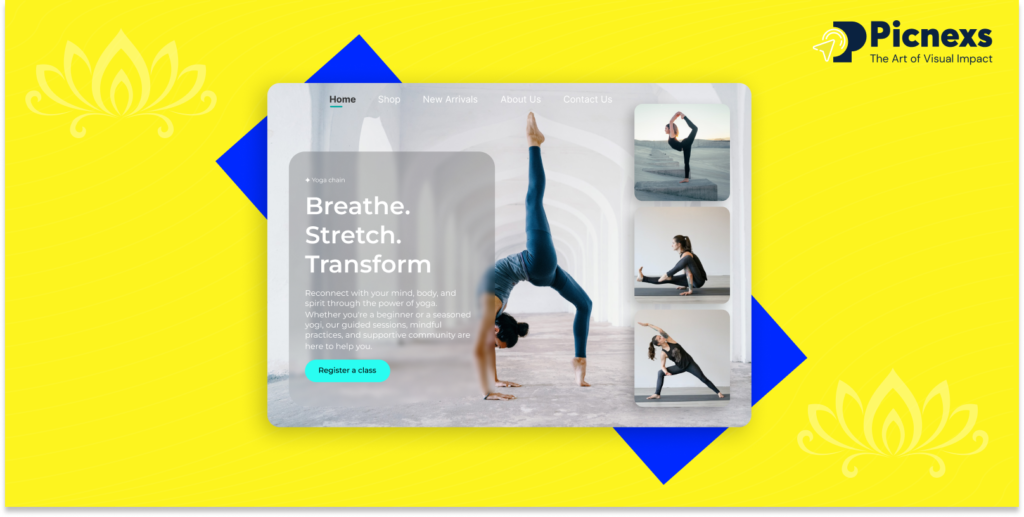
A high-converting landing page is purposely created to draw attention, improve user experience, and convince people to act – it might be signing up buying, or even downloading a resource.
Each component of the page should be created to guide the visitor to the goal of conversion.
Clear & Compelling Headline

The first thing the visitors of your website see is your headline, so it has to be very powerful and convincing. A perfect headline must:
✔ Just read the main product or service benefit of yours.
✔ Be short and thrilling (look for around 6–12 words).
✔ Speak of a pain point and provide a solution for it.
Example:
❌ “Our Software is the Best!”
✅ “Boost Your Website Speed by 300% in 5 Minutes!”
Persuasive & Concise Copy
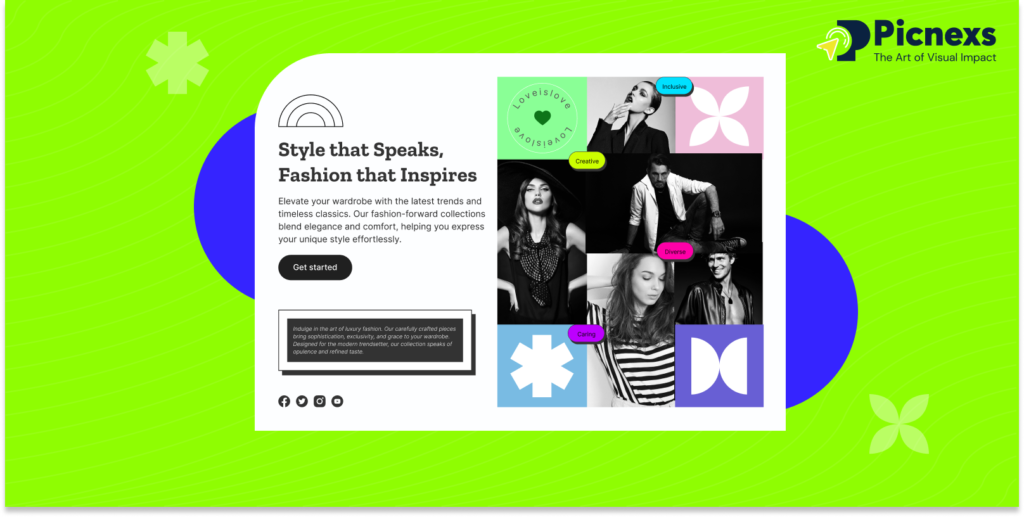
Your content has to be straightforward, concise, and targeted to the conversion. People will not waste their time on long narratives, therefore keep it brief and to the point.
Key Points:
- Make sure that instead of only the features you also include yet another paragraph of benefits. So, from “Our software has AI-powered analytics,” tell them “Get informed the smart way through AI-driven solutions.”
- The central purpose is to utilize bullet points to show lucrative benefits that are easy to look through.
- Relate to the customer’s problem they are facing and communicate how your product can solve their issues.
Example:
Before (Feature-Based Copy): “Our software is a great way to have advanced analytics, real-time tracking, and seamless integrations in one tool.”
After (Benefit-Driven Copy): “Get deep insights into customer experience, track performance in real-time, and integrate with a variety of your most loved applications.”
Strong Call-to-Action (CTA)
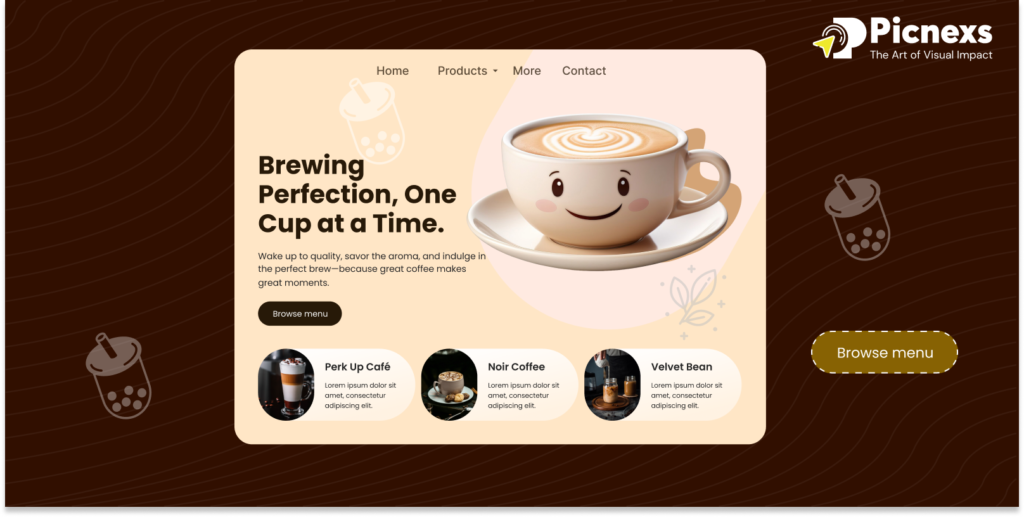
People buy the first product they see. Therefore, it is essential to have a straightforward call to action that works best for your visitors.
How to Create a Powerful CTA:
✔ Take immediate action and don’t hesitate with powerful handheld words such as “Get Started,” “Try for Free,” and “Download Now.”
✔ Make it stand out with contrasting colors and large buttons.
✔ Target the pain area. This means simplifying things (avoid “Sign Up for a Lengthy Form”).
✔ Make the tagline: “Register Before It Goes Out Of Stock – It’s Now Or Never!”
Example:
❌ “Submit”
✅ “Claim Your Free Trial Now”
Minimal Distractions

A landing page should focus on one goal and should eliminate distractions that could cause visitors to leave the page.
Best Practices:
✔ Remove unnecessary navigation links—avoid a menu that operates as the landing page would not be the same as a typical webpage.
✔ Do not add loads of text—present it briefly and clearly.
✔ Utilize the space properly to make the design look neat and avoid cluttering.
Example:
❌ A page filled with items like various offers and links.
✅ A page that is dedicated to the main CTA with supporting information.
Trust Signals & Social Proof

People are more likely to make a move when they watch a real person the same or an abstract person and feel that they can be trusted.
What to Include:
✔ Testimonials & Reviews: Display feedback from real customers.
✔ Case Studies: Describe successful happenings.
✔ Trust Badges: The company’s security certificates, awards, and partnerships.
✔ User Counts: Example: “Join 10,000+ Happy Customers!”
Example:
❌ Without any testimonials or proof that customers liked it.
✅ A section with 3-5 customer testimonials, company logos, or ratings to be shown.
Mobile Optimization
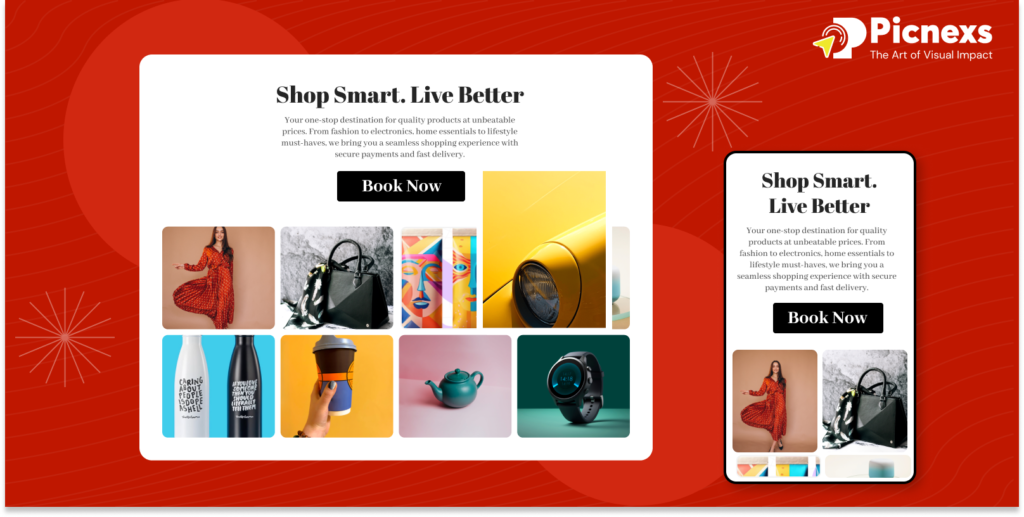
More than 50% of the overall users are using mobile phones to browse the website, so your landing pages have to be designed to be responsive and mobile-friendly.
Optimization Tips:
✔ Be sure that the text is big enough and it can be viewed without zooming in.
✔ Just set up large buttons that can be tapped for the CTA.
✔ Make sure that the forms are easy to fill out on mobile.
Example:
❌ Tiny text and a cluttered layout that’s hard to navigate on mobile.
✅ A clean, mobile-friendly design with large fonts and buttons.
Fast Loading Speed
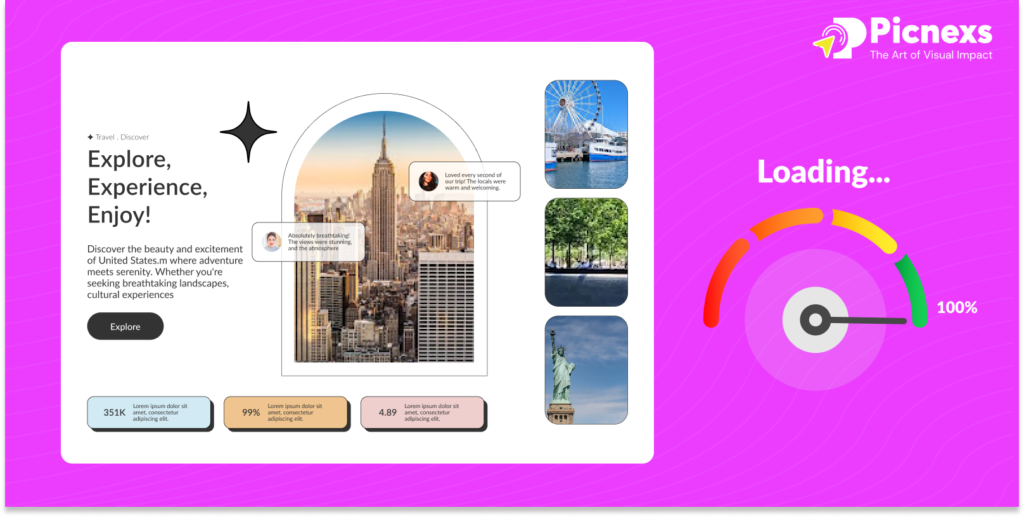
The decline in conversions comes with longer load times, it only takes three seconds too much for visitors to leave.
How to Improve Speed:
✔ Optimize images (use compressed formats like WebP).
✔ Minimize code (remove unnecessary scripts).
✔ Use a Content Delivery Network (CDN) for faster global loading.
Example:
❌ A page that loads in 5+ seconds, causing users to leave.
✅ A page that loads in under 3 seconds for smooth navigation.
A/B Testing & Continuous Improvement

Even perfectly designed landing pages have to go through a trial and error phase of testing to get the right mix and one that turns into conversions.
What to Test:
✔ Different Headlines – Which one is more effective, the one that is benefit-focused or the one that ends with a question mark?
✔ CTA Button Color & Text – Which of the following messages can be more successful, “Get Started” instead of “Sign Up”?
✔ Images vs. Videos – Is a demo video that explains the service more captivating?
Tools for A/B Testing:
Hotjar (A heatmap to see where users drop off; tracking software that collects and records all activities on a website, including the clicks, scrolling, and movements).
Unbounce (A/B testing the landing page is easy due to the clear and well-known drag-and-drop functionality provided).
Why Businesses Need a Design Agency for Landing Pages
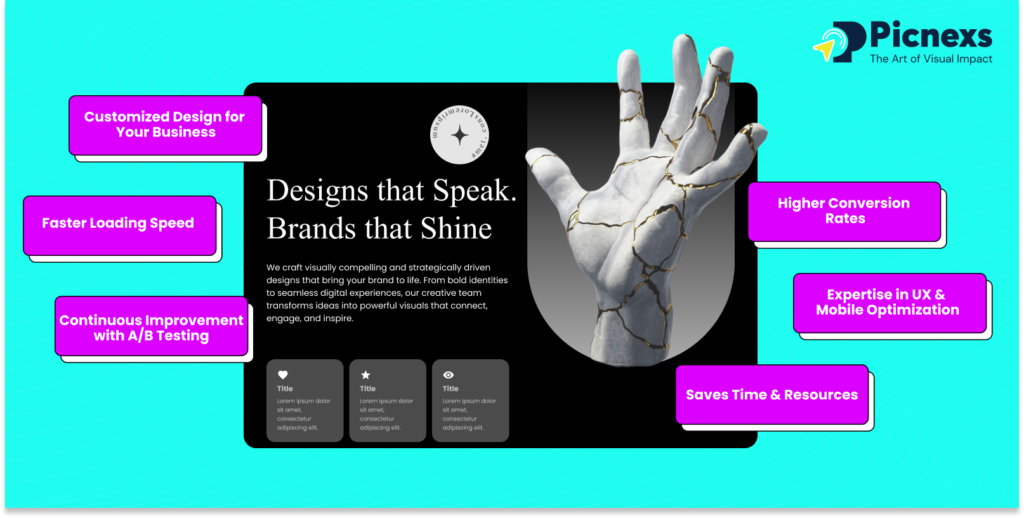
Most companies are not aware that the templates they use are so generic that DIY landing pages are not effectively converted or communicated with their users.
The professional design firm hired certainly is aware of this and knows how to create your landing page in a way that will allow you to get the most conversions and customer engagement.
✔ Customized Design for Your Business: A customized design guarantees your landing page will be consistent with both your brand’s identity and your audience’s.
✔ Expertise in UX & Mobile Optimization: Landing pages made by these developers are entirely adaptable and have a clear navigation path for every type of device.
✔ Faster Loading Speed: A well-coded, optimized landing page enables a quick and trouble-free performance to the users thus increasing the SEO ranking.
✔ Continuous Improvement with A/B Testing: Companies create several versions of the page for analysis of the best-performing items and improvement over time.
✔ Saves Time & Resources: Instead of spending hours trying to figure out which are the best design practices, you can focus on your main activity which is to grow your business, while the experts are dealing with the landing page.
Investing in a professionally designed landing page can directly affect your conversion rates, customer engagement, and business growth as a whole.
Final Thoughts
A high-converting landing page research has demonstrated that it is a technique not just the appealing visual it is a strategic instrument used by businesses for leasing conversion, increasing sales, and augmenting brand credibility.
By following appealing messages, mesmerizing visuals, powerful CTAs, and mobile optimization you will end up making landing pages that impact your enterprise.
What is more, when you want to realize your success, employ a design agency to ensure that your landing pages are built for long-term growth and have a higher ROI rating.
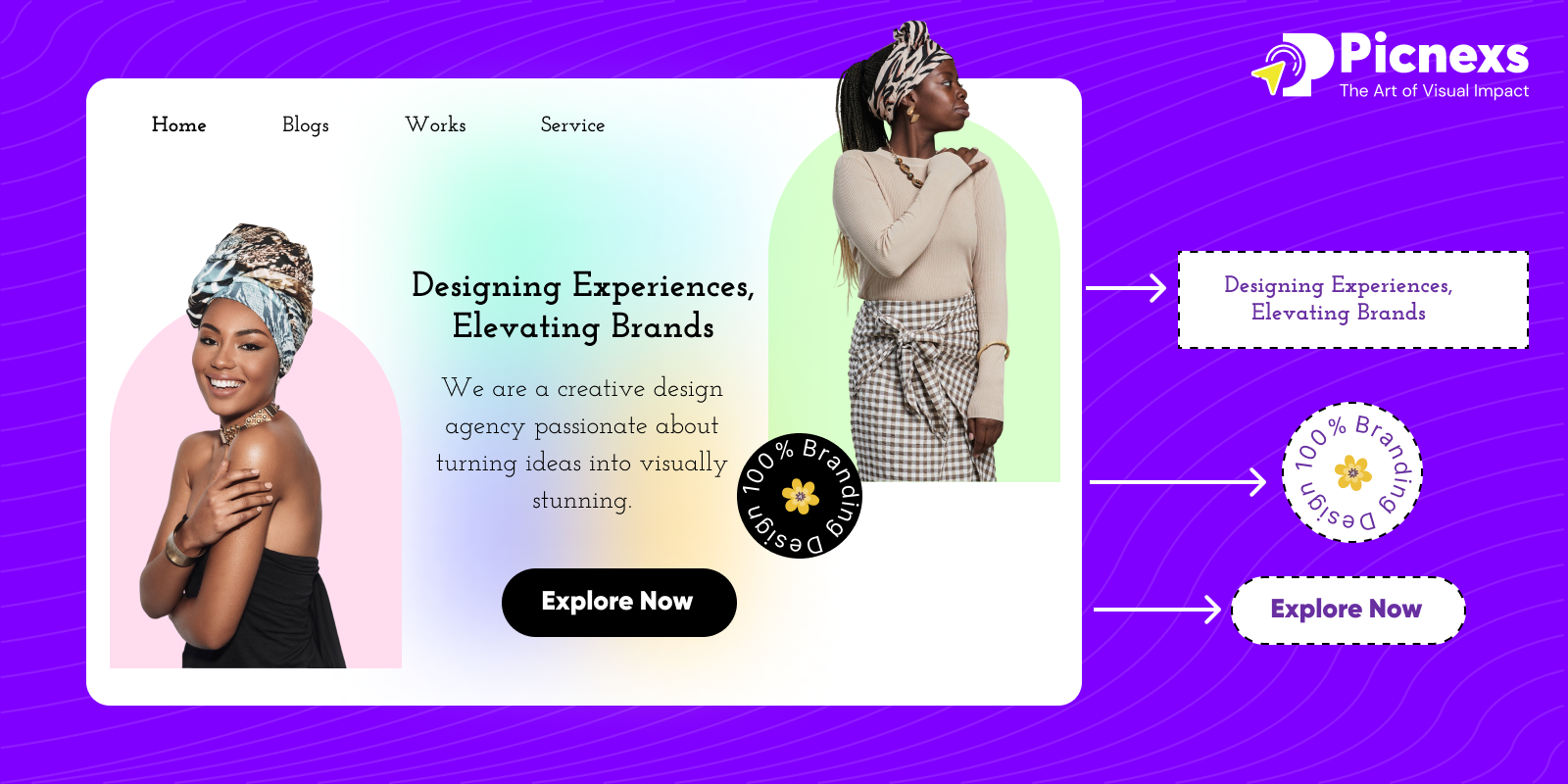
Leave a Reply